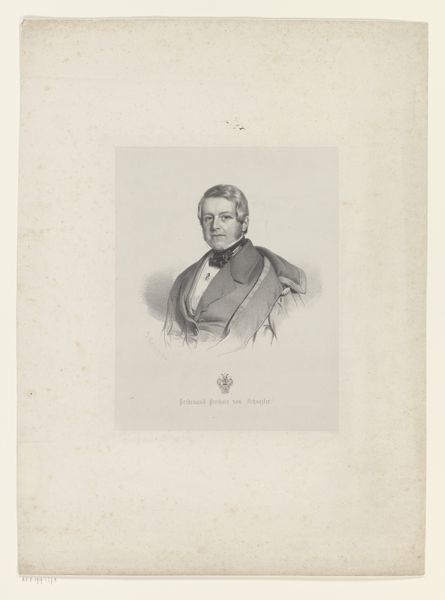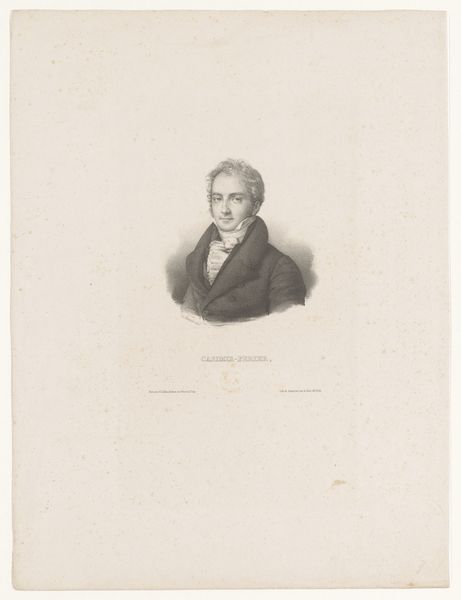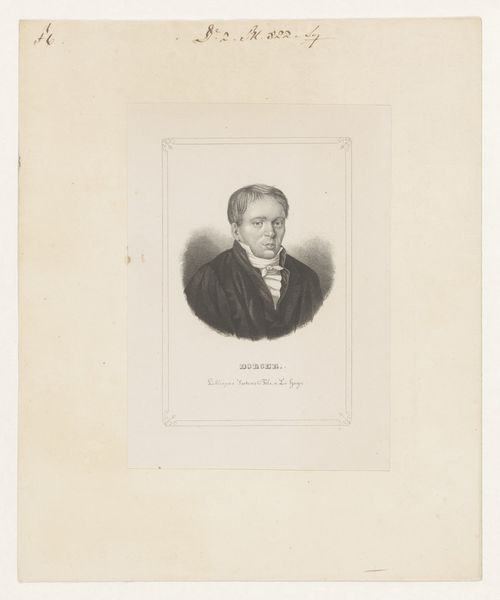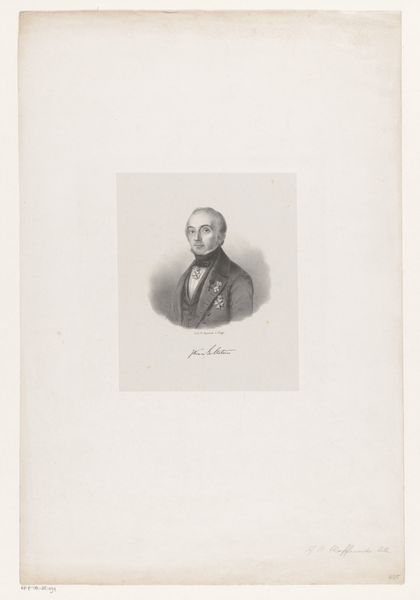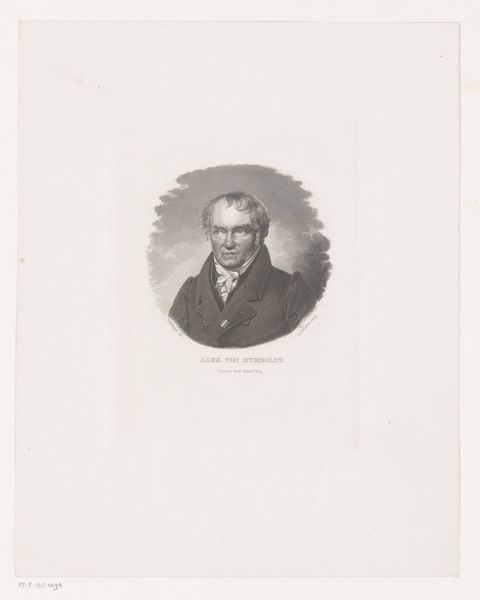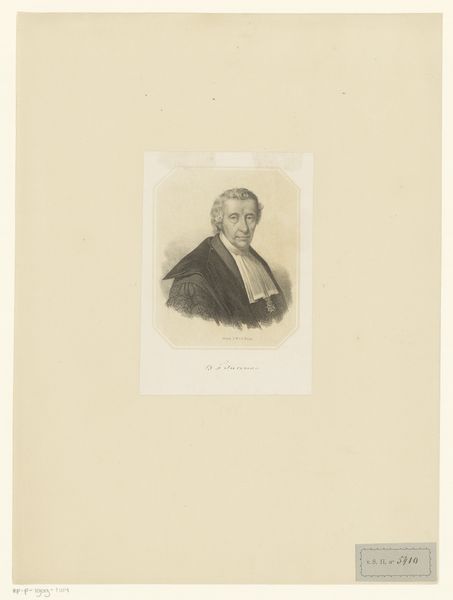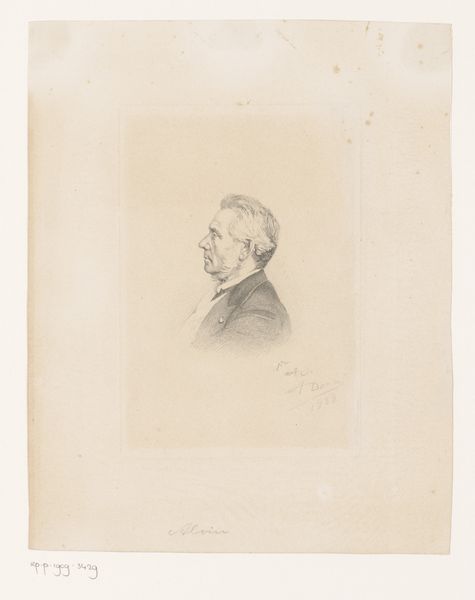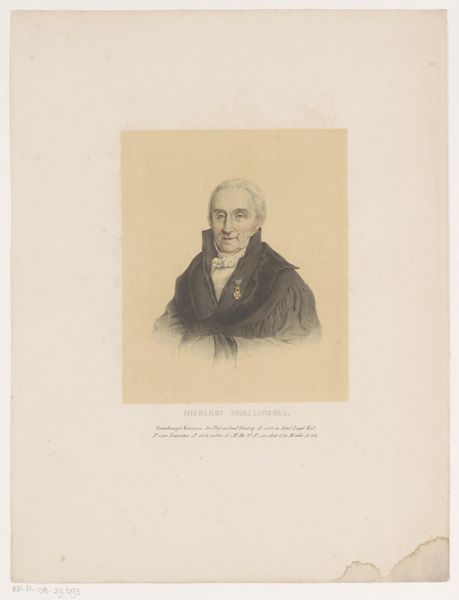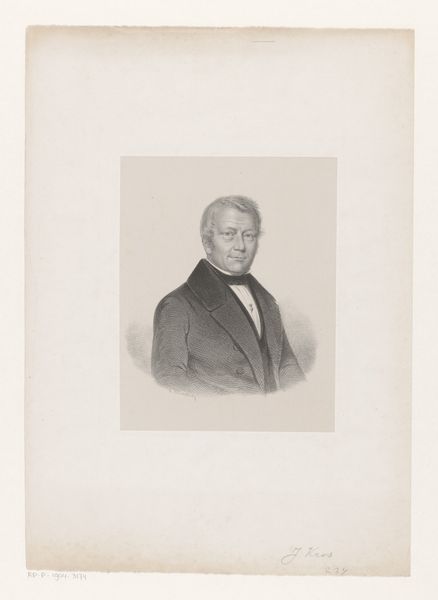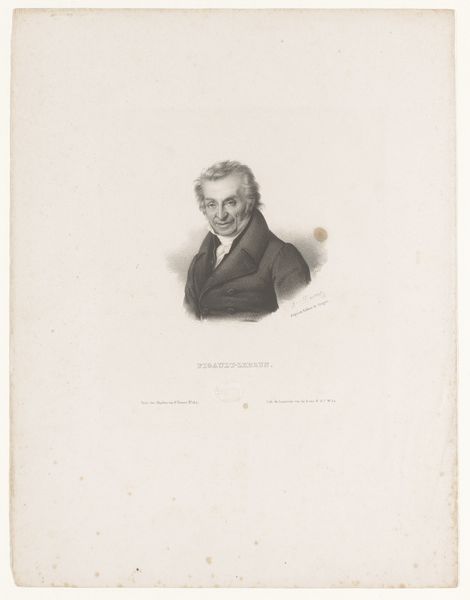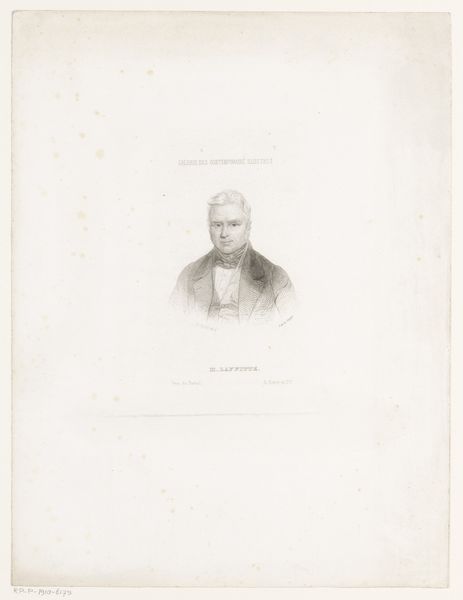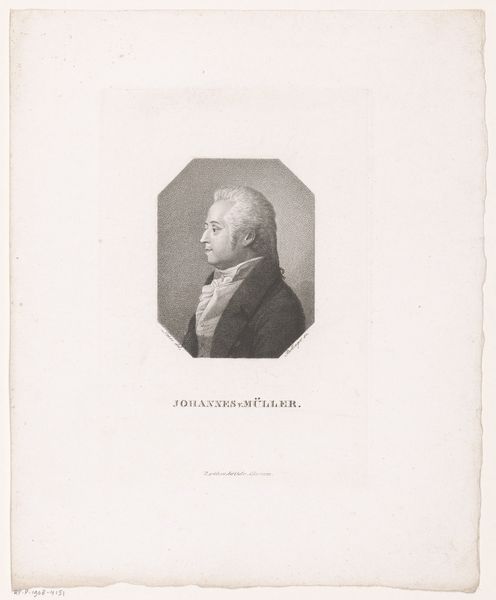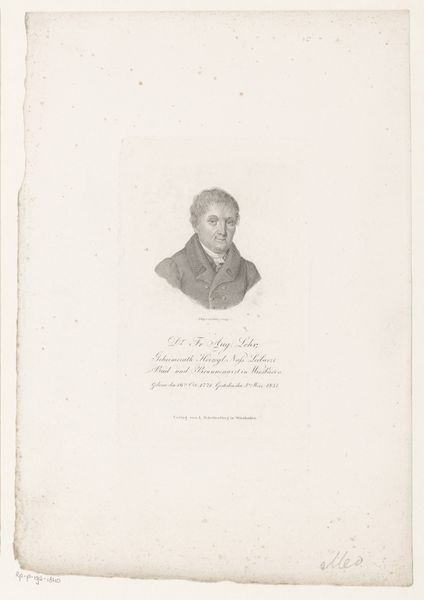
print, paper, engraving
#
portrait
#
aged paper
#
toned paper
# print
#
old engraving style
#
paper
#
romanticism
#
history-painting
#
engraving
#
realism
Dimensions: height 598 mm, width 414 mm
Copyright: Rijks Museum: Open Domain
Editor: So, this is "Portret van Johann Stieglitz" made in 1840 by Julius Giere. It’s a print on paper, held in the Rijksmuseum collection. What strikes me first is the tonal range achieved solely through engraving. The face has this really captivating intensity. How do you interpret this work? Curator: The engraving technique indeed creates a fascinating play of light and shadow. Notice how Giere meticulously modulates the density and direction of the lines to sculpt the face. The formal composition creates a very geometric structure; the oval portrait sits inside a square border, and all inside the rectangular page. Editor: I see what you mean! So the structure of the lines creates depth? Curator: Exactly. We see an intellectual intensity emanating through a sophisticated network of interwoven lines. The stark contrast focuses the eye, yes? Editor: Yes, it does! That shadowed section under the neck is subtle, yet creates a solid anchor for the portrait. Are there other structural features that stand out to you? Curator: Consider the implied texture – the coat versus the smoother skin. The artist differentiates these using varied engraving techniques. One has implied roughness, and the other one sleek. Editor: So, by understanding these choices, we start to decipher the essence of the piece and really "see" it, don't we? I find it interesting how technique and execution elevate it from a simple depiction to a complex work of art. Curator: Precisely. The engraving becomes a language, its vocabulary revealed through focused observation and decoding the intrinsic aspects of art.
Comments
No comments
Be the first to comment and join the conversation on the ultimate creative platform.
